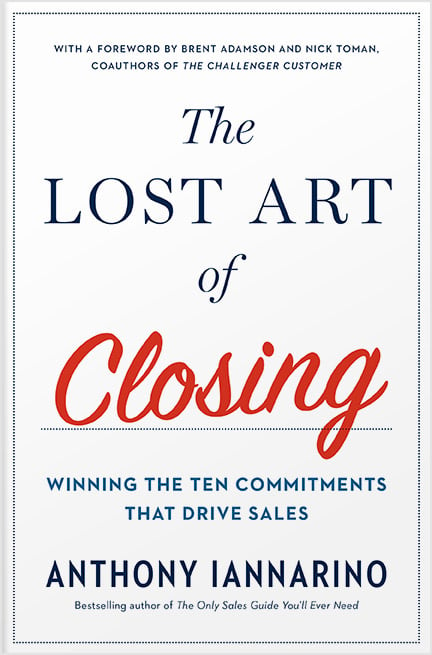The Gist:
- Sales is made up of two parts: Opportunity Creation and Opportunity Capture.
- The more you focus on these major outcomes, the better your results.
- Your goals and measurements should be based on these two outcomes.
The idea of the OKR (Objective and Key Results) comes from Andy Grove, the CEO of Intel in the early seventies. Grove had an admirable penchant to treat his sales force as the best source for figuring what was going on with Intel’s clients. He listened, learned, and made adjustments.
Grove introduced OKRs in his book High Output Management, outlining his approach to getting the right things done and continually improving results. The objective is your goal, clearly expressed. The key results are three to five results that track the achievement of the objective. You really only need two OKRs to drive your success in sales—opportunity creation and opportunity capture—though I could be persuaded to add a third. Here’s how an OKR breakdown might look for a professional sales force. There is no reason to accept my OKRs. But even if you don’t, take some time to read Measure What Matters by John Doerr, who Grove forced into sales.


The First OKR: Opportunity Creation
Objective: Create new opportunities among our target clients and within our existing client base that exceed our revenue goals by fifty percent.
Key Result One: Second meetings with target (prospective) clients.
Key Result Two: Second meetings with existing clients to explore new initiatives.
Key Result Three: New opportunities created with target clients.
Key Result Four: New opportunities created among existing clients.
Key Result Five: The total potential revenue from all new opportunities.
Sales starts by scheduling meetings with your target clients (prospects) to engage with them about some better result you believe you can help them achieve. At the same time, you schedule meetings with your existing clients to help them move from strength to strength, improving their results with your help and guidance. You may have noticed that I chose to count second meetings instead of first meetings. My reasoning here is that a second meeting is evidence that the salesperson has created enough value to be able to continue the conversation. First meetings are important, but measuring them doesn’t reliably capture how well salespeople create value.
Regardless of whether you meet with a prospective client or an existing client, the necessary result is a new opportunity. The key results here are in line with a territory and account plan, counting both opportunities from new and existing clients (one of the keys to creating high growth). For the last key metric, I recommend measuring total potential revenue from both categories.
This sample doesn’t include targets for each of the key results, but personally, I would start with 13 second meetings in each category, new and existing. You might need to start with a different number. To make this even simpler, you could choose to count second meetings, new opportunities, and potential revenue from all new opportunities, which would give you a good idea of how you are doing.


The Second OKR in Sales: Opportunity Capture
Objective: Win new opportunities in excess of our revenue targets by 17%.
Key Result One: Consensus meetings (those with more than four stakeholders, including one or more leaders).
Key Result Two: Exchange of contracts (either we provide them our contract, or the client provides us with theirs).
Key Result Three: Signed contracts.
I tend to look at later stages to determine how things are progressing, even though I am generally thrilled to hear any evidence about deals progressing. OKRs are built to drive certain behaviors. Because my experience is that most deals require some kind of consensus, tracking the number of meetings with consensus as the desired outcome ensures that your sales force pursues that key result. None of this suggests that you aren’t going to look at every opportunity as it progresses.
A contract is an excellent sign that you’ll win a client’s business. But it is far from perfect, especially in a world where larger companies require indemnifications that shift all the risk to the sales organization. Things sometimes fall apart down the home stretch, so work towards a surplus of contracts large enough that it allows you to achieve your objective. That’s a good hedge against bad sales, bad deals, and the bad luck that sees your largest deal die when a competitor buys your client’s company four days before you are scheduled to sign a contract.
Signed contracts, of course, are won deals. A target number of signed contracts is a simple metric that is easy to track. But if you wanted to measure the revenue generated from those contracts rather than the number of deals, I would offer no resistance.
What You Need to Know
Tracking your goals and the evidence that you’re pursuing them effectively is incredibly important. But what you really need to know is that sales is made up exactly two categories: creating new opportunities, then pursuing and capturing those opportunities. While the flashy, ever-expanding CRM dashboards may provide all kinds of potentially valuable insights to a sales leader, for salespeople, only those two things move the needle. So when you evaluate your progress, measure the things that you believe contribute to those goals, such as second meetings (proof of value creation) and consensus meeting (a difficult result that is evidence of progress).
To focus on those outcomes, first ensure that you spend your time on creating and winning new deals, reducing or eliminating anything that takes your time away from those two outcomes. Second, enable your sales force to continually increase their effectiveness. A focus on these two outcomes will never fail to pay dividends long into the future.
Do Good Work:
- How do you measure the key results that prove you are creating new opportunities?
- How do you measure the key results that provide data on capturing new opportunities?
- What do you need to do to improve your effectiveness in these two major outcomes?

Essential Reading!
Get my first book: The Only Sale Guide You'll Ever Need
"The USA Today bestseller by the star sales speaker and author of The Sales Blog that reveals how all salespeople can attain huge sales success through strategies backed by extensive research and experience."
Buy Now







.jpg?width=768&height=994&name=salescall-planner-ebook-v3-1-cover%20(1).jpg)


